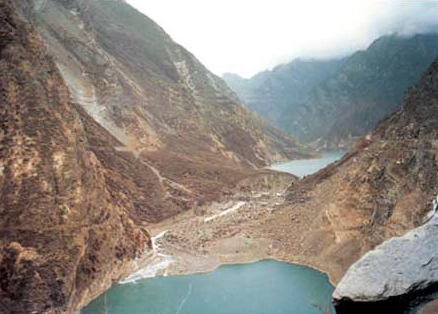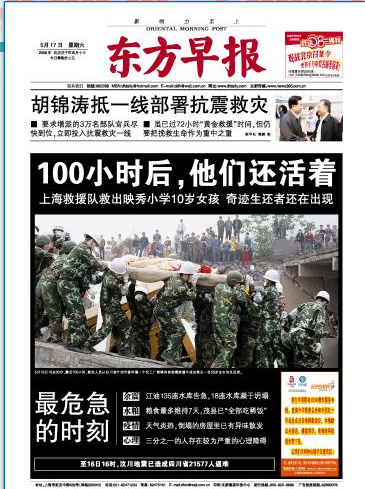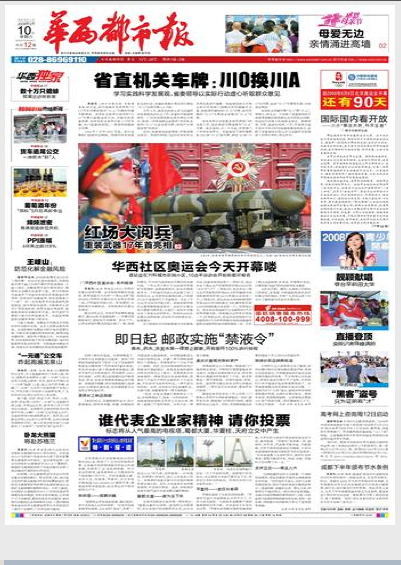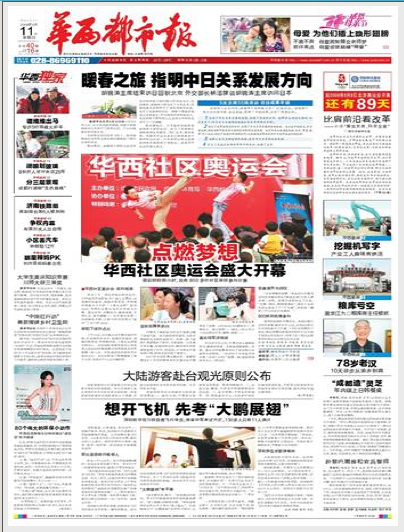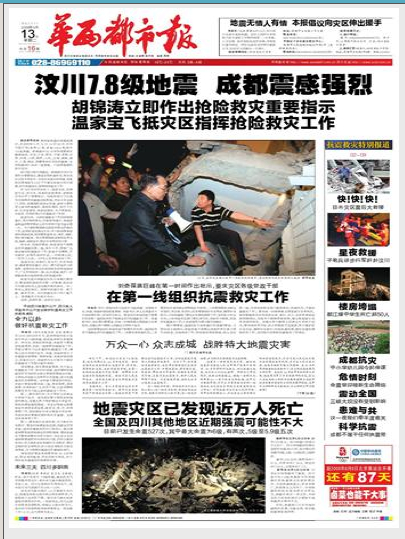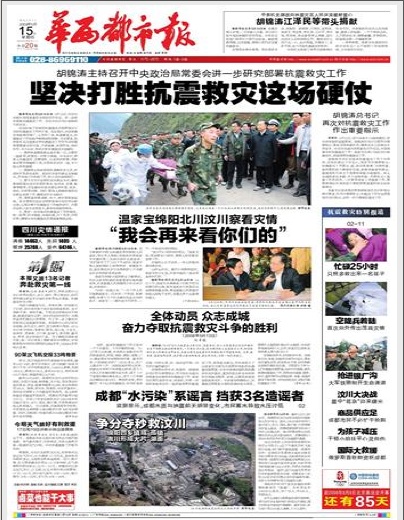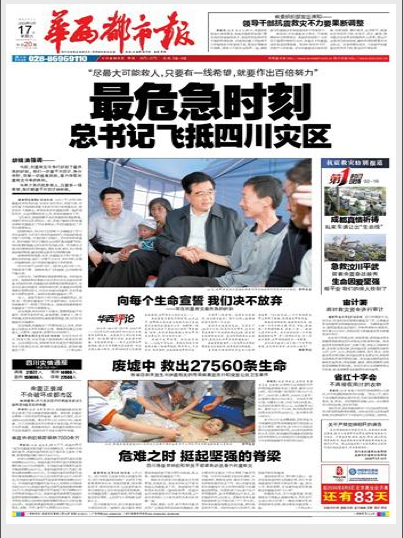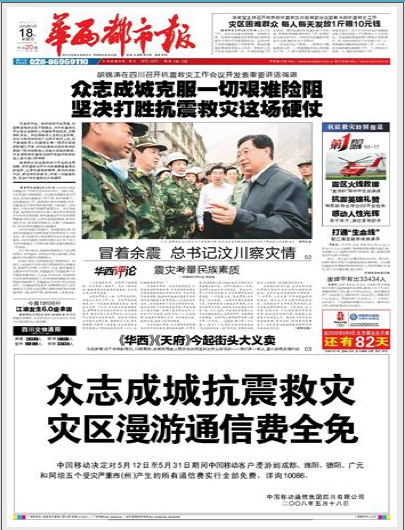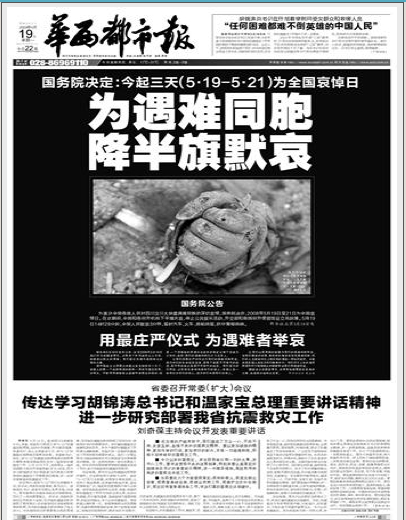Zhang Qianfan: making China's schools safer means building local democratic mechanisms
By David Bandurski — One of the most persistent issues to emerge in the aftermath of the Sichuan earthquake is of course the question of shoddy school construction. In a column running in The Beijing News just before the weekend, Peking University professor Zhang Qianfan (张千帆) argued that the building of local “democratic mechanisms” was necessary if China wished to avoid repetition of the tragedies of Wenchuan. [Homepage Image: Screenshot of Sohu.com coverage of rescue efforts at Juyuan Middle School in Sichuan on May 13, 2008.]
“Local Democracy is the Basis for Rebuilding after the Disaster”
By Zhang Qianfan (张千帆)
The recent Wenchuan quake resulted in massive injury and loss of life, including the death and injury of many students and teachers as their school buildings collapsed, something that has saddened our whole nation. After experiencing this massive earthquake . . . we cannot help but soberly consider the institutional causes of this phenomenon [of shoddy school construction], and how we might remedy these institutional problems as we go through the process of rebuilding. Only in this way can we avoid repeating the tragedies of Wenchuan.
The school buildings that collapsed in the disaster area were those of five-stories and higher, and most were pre-fabricated, in direct violation of the Primary and Secondary School Architectural Design Standards (中小学校建筑设计规范). While some government administrative buildings in the disaster area were similarly constructed, the vast majority were not, and this has invited controversy among Internet users. Officials from the Ministry of Education and the Ministry of Housing (建设部) have publicly addressed the concerns expressed by Web users, and the Ministry of Housing has also asked that the Ministry of Education join it in conducting a joint inquiry. But while these are signs of definite progress, they are insufficient to address the problems exposed by the Wenchuan quake.
As one researcher from the China Earthquake Disaster Prevention Center (中国地震灾害防御中心) has pointed out, “Earthquakes in and of themselves are not killers, rather it is the destruction of buildings that causes injury and loss of life.” If we explore this a bit deeper, we understand that while these collapses owe to quality issues, human beings built the buildings themselves. So why weren’t they built to national standards? And why is it that government buildings are of much higher quality than the school buildings?
The answers are not difficult to find. The reason is that a great deal more is spent on constructing government buildings than on constructing schools, so of course they are of higher quality and better able to resist earthquake damage. But where does the government’s money come from? Some of it comes from central government outlays, but the majority comes from taxes on ordinary local people. If we were to allow the local people to determine how to spend this money, what would they decide? Would they reserve more money for government buildings, or for the school buildings where their own children carry out their studies? There’s no sense in even answering this question – what family doesn’t care more for its own children?
So why are there so many school buildings of inferior quality? The answer is simply that ordinary people have not had any real say in how tax money is spent – this phenomenon cannot otherwise be explained. Governments and schools both are public entities sustained by tax revenues, and the structures that house them are built with appropriations determined by local governments. But because the specifics of appropriation are primarily determined by the government, it naturally follows that more building funds are budgeted for government buildings. The natural result is that schools face funding shortages, inferior quality and construction that falls short of national standards.
Why is it that local governments fail to implement national standards? Is it because supervision from the central and regional government is to no avail? The specific case in Wenchuan has already drawn attention from the central government and the whole nation, and the Ministry of Housing has already said it will conduct a thorough investigation. And perhaps we can hope that the central government will resolve the problem of school building quality in Wenchuan through direct intervention. But of course there is no conceivable way that the Ministry of Housing, the Ministry of Education, the Ministry of Supervision and other central government authorities can remain in Wenchuan for the long haul, fixing their eyes on local officials to ensure they abide by national construction standards. They have plenty of other priorities. Once they have made their exit, how are we to ensure that rebuilding in the earthquake zone is done with a mind to the basic interests of the people?
And across China, how many Wenchuans are there exactly? We cannot possibly expect the central government to keep its eye on every local official in order to ensure national regulations are followed. If we rely exclusively on the top-down supervision of the central government, well then, even if we do solve the problem of substandard school buildings in the area of Wenchuan, problems in other areas will remain. The tragedies of Wenchuan will be played out in some other place.
This being the case, how can we ensure that schools in other areas do not collapse? Essentially, this needs to happen through local democratic mechanisms making local officials answer truly to the local people. More specifically, ordinary people must either directly or indirectly participate in the government budgeting process so that expenditures become truly “public expenditures” rather than budgets made at the discretion of the local governments themselves.
In Zhejiang’s Wenling (温岭) and other areas, local governments have already begun conducting so-called “democratic consultations” (民主恳谈), budgetary hearings and other experiments to protect the rights of local constituencies to participate in the budgetary process. These are very valuable democratic experiments, and they deserve to be energetically pushed out into other areas.
Naturally, ordinary people do not necessarily have the time or the interest to directly participate in the political process, and this is why, in democratic nations, they generally entrust their own representatives to supervise government administration and make budgetary decisions. From the beginning, decisions about taxation and budgeting are passed by local congresses, and the role of local governments is simply to execute these budgets. This means of course that taxes won’t simply be channeled into the construction of government buildings.
Why would these representatives (代言人) of the people give more money for the building of schools? Because they are elected by the local people. Should their decisions contravene the interests of the local people, or jeopardize the safety of children, or should they squander the public’s money to build lavish offices or other pointless ventures, the people can in similar fashion vote them out. If the representatives of the people wish to be elected, and if they wish to remain elected, then they must act in the interest of the electorate, and they must exercise their authority to ensure that the whole government operates for the good of the people.
In 1982 China’s constitution stipulated that local people’s congresses and people’s congress delegates across the country had the authority to supervise the budgetary process. But due to numerous problems in the elective process for people’s congresses [IE, local party leaders controlling the selection process and/or serving on the congress], the stipulations of the constitution could not be actually be carried out. It is for this reason that we now see this phenomenon of luxurious government complexes contrasting with the frailty of school buildings . . . And therefore, to say that the Wenchuan earthquake exposes the frailty of a great number of rural school buildings is not as good as saying that it reveals the need to improve democratic mechanisms at the local level in China.
If we wish to ensure school buildings stand up in the midst of disaster just as government buildings do, the only way is to actually implement the elective systems (选举制度) mandated by our constitution. Reconstruction in the disaster area looms on the horizon, but what we need to rebuild first and foremost are local democratic mechanisms.
[Posted by David Bandurski, May 26, 2008, 6:35pm]
